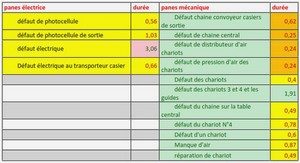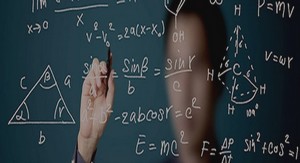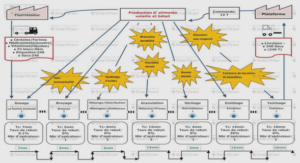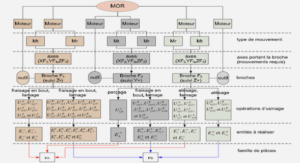Towards design stability margins
estimations using Chetaev functions
Definition Formally, stability is a concept that characterizes the equilibrium positions of a system22 . Imagine what would be the motion of the particles of mass m if they were slightly deviated from their equilibrium,Mathematically speaking, following (Perelmuter & Slivker, 2013): let q0 be the vector of a system’s generalized coordinates for a given equilibrium. This state is said to be stable if for any small number ε there exists a respectively small number δ such that for any perturbations of the generalized coordinates, δq0, and initial velocities δq̇ 0 which satisfy the conditions In other words, for an equilibrium to be stable, the generalized coordinates should not go beyond the ε neighborhood of the initial equilibrium state in the course of the system’s subsequent motion. The same neighborhood should contain also the generalized velocities of the system which were zero in the initial state of equilibrium. An equilibrium is said to be unstable if it is not stable. It is critical to be able to determine as soon as possible in the design process whether a rotorcraft design is prone to any dynamic instability. Ideally, this should be assessed based on a model that represents the rotorcraft with the highest physical fidelity in terms of subsystems behaviors (structural mechanics, aerodynamics, hydraulics, pilot biodynamics, etc.) and independently from the linearity or nonlinearity of their associated mathematical models (due to geometry, large displacements or material behavior) at the lowest computational cost. In the rotorcraft community, stability studies usually limit to the investigation of linear models.
State-of-the art
The most general theory to investigate the stability of equilibriums of ordinary differential equations has been introduced by Aleksandr Mikhailovich Lyapunov at the end of the 19th century. Lyapunov’s methods have the power of being applicable to nonlinear systems. His methods are usually classified in the direct and the indirect categories.
Lyapunov’s indirect method
The indirect method allows to conclude on the local stability of an equilibrium of a nonlinear system ẋ=f(x) by considering its linearization ẋ=A.x around the equilibrium (Perelmuter & Slivker, 2013), A being the classic state-space matrix. i. If the real parts in all roots of the characteristic equation of the linearized system are negative, then the equilibrium of the nonlinear system is asymptotically stable ii. If the real part in at least one root of the characteristic equation of the linearized system is positive, then the equilibrium of the nonlinear system is unstable However, one should keep in mind, that in the case the roots of the characteristic equation of the linearized system contain some purely imaginary ones, while all the others have negative real parts, the first approximation equations are not enough to decide whether the equilibrium is stable or not. In this case, higher order terms are necessary to conclude.
Periodic systems
Historically (Peters, Lieb, & Ahaus, 2011), back at the end of the 19th century, scientists investigated the stability of natural satellites’ orbits around a planet under periodic variation in gravitational force. The problem can be casted in its simplest form in the following periodic differential equation, known as Mathieu equation, 2 x t t x ( ) sin( ) 0 (66) It has a period of 2π and for ε=0 becomes aperiodic or constant. This kind of time periodic equations arise in rotating systems and especially in helicopter systems. The behavior of time periodic equations is particular in the sense it can lead to parametric resonance or parametric instabilities; this will be illustrated later with ground resonance. To study the stability of periodic systems, many approaches exist (Peters, Lieb, & Ahaus, 2011). In the case of a rotor-airframe system, if the rotor is not isotropic and the equilibrium of the aircraft is far from hover flight or cannot be considered at low advancing speeds, the rotorcraft mathematical model takes after linearization the shape of a state-space system ẋ=A(t).x, with a time-periodic state space matrix, with A(t+T)=A(t) where T=2π/Ω and Ω is the rotor angular velocity (Bielawa, 2006). In the rotorcraft and wind turbines community, the most popular method to investigate the stability of such systems was proposed by Gaston Floquet in 1883
Floquet theory and linear time periodic systems
In this section, the Floquet method is presented (Bielawa, 2006), (Coisnon, 2014). Let be a linear time periodic (LTP) system ẋ=A(t).x, with A(t+T)=A(t) and x ϵ Rn . When the system is linear-time invariant (LTI), time does not appear explicitly in A and a stability analysis can be resumed to an eigenvalue resolution. In the case of an LTP this is not possible anymore. Floquet solves the problem by introducing a matrix B, called monodromy matrix that can be constructed by concatenating n independent solutions of the system at time T. The monodromy matrix characterizes the system state over 1 period. The n independent solutions are n vectors that can be obtained numerically by integrating n times for n different initial conditions, over a time interval between 0 and T with the help of a numerical method. The determination of the stability of an equilibrium can be assessed by computing the absolute value of the eigenvalues λi of matrix B,





